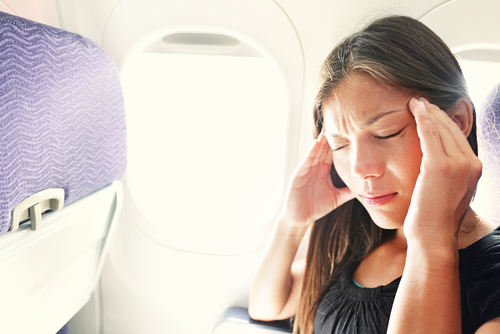What’s causing your fear of flying?
When flying is considered to be the safest way to travel, why does your fear of flying continue to plague your journey? The commercial airline industry is one of the most scrutinized forms of transportation. Just Google the facts and you will learn about a pilot’s extensive training, backup systems, maintenance, and the industry’s incredible safety record etc. You will also be told that statistically, you are more likely to die in a driving accident or in an accident caused in the home. Has that reassured you enough to book your flight tickets?

These research statistics that prove that commercial flying is safe can offer very little comfort if you already believe that flying is dangerous. One explanation for this is that statistics connect to the logical and rational part of your mind where “knowing” it is safe can satisfy it.
Feeling that flying is safe is a different thing altogether! It can be frustrating when that ‘already-convinced-that-flying-is-safe’ friend of yours confidently asserts that “flying is awesome…you’ll be fine!” And somehow, those remarks just don’t connect with your emotions of sheer terror.
If knowing these safety details doesn’t reassure you, it’s because your brain’s anxious wiring system lies underneath those conscious, logical faculties that can accept that it is safe. Sometimes called the “fight or flight!” center in your brain, it’s a part that is hot-wired to produce the physical stress symptoms that are commonly experienced when you have, rightly or wrongly, connected a situation as a dangerous one. The stress symptoms include racing heart rate, shallow and rapid breathing, profuse sweating, confusion etc. These symptoms are also part of the acute anxiety response known as a panic attack.
The “fight or flight!” centre is also strongly connected to emotions, beliefs and memories (regardless of whether the memories are easily recalled or forgotten). If you have had a direct flying trauma, you can reasonably expect your mind to protest against any new “information” that contradicts what you already believe from the trauma that you have previously suffered. It’s the indirect past “traumas” that can cause confusion in your mind, placing you on a high alert when the current situation is not “known” as a threatening one. Previous unresolved or forgotten core threats latch onto new situations by association until the core threat is acknowledged and dealt with. Your mind is being flooded with your past accumulated threat whilst trying to make sense of the new apparent danger.
What are these unresolved fearful situations that can leak into your flying experience and add ‘fear of flying’ to your danger list? Some of the more common unresolved fears include fear of confined spaces (claustrophobia), fear of heights (acrophobia) and fear of embarrassment triggered by having a panic attack in front of other people (social phobia). With these core issues, the original experience may not have directly involved flying, but they can be associated with flying in a future experience. So when you now have a moderate feeling of anxiety when flying due to turbulence for example, your mind stacks the combined anxiety and motion with past core issues such as confined spaces, heights or crowds. Flying becomes the new danger, even though turbulence on its own is a lesser threat. There are several unresolved fearful situations listed in this link that could be causing your fear of flying
For many people, flying is an essential method of travel. Having an extreme fear of flying can ruin the enjoyment of your family holiday. It may also distract your preparation leading up to your important work-related meeting abroad. Deal with the core issues that are contributing to your fear of flying and you can fly with confidence.



